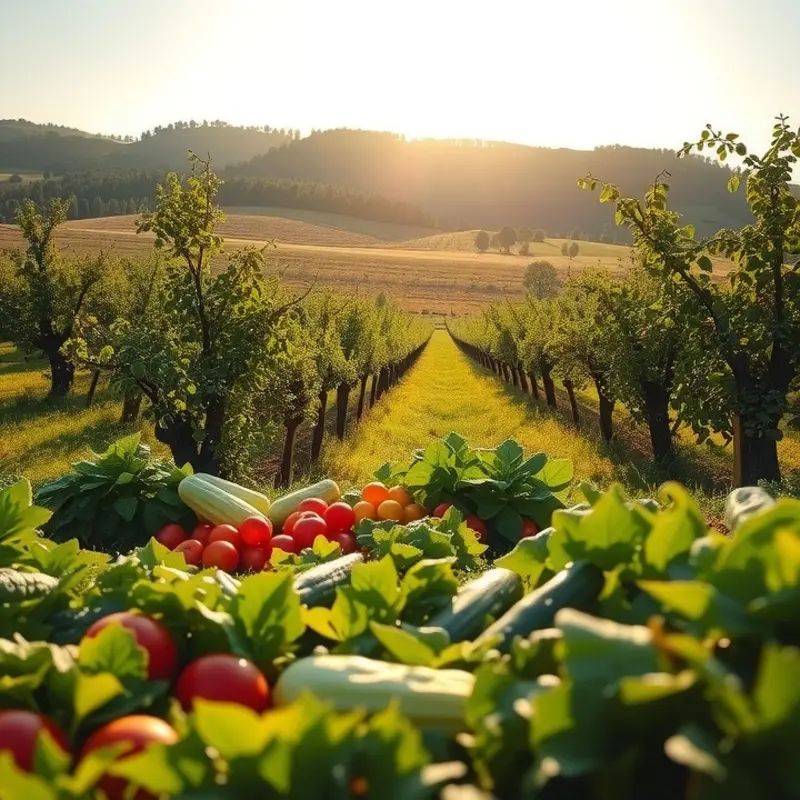Iron is an essential nutrient that plays a crucial role in maintaining overall health, particularly in energy production and immune function. As health-conscious adults explore dietary choices, understanding the importance of iron, its various forms, and how to incorporate it into meals becomes vital. This guide will equip you with foundational knowledge about iron, helping you make informed dietary choices to enhance your well-being.
The Importance of Iron: A Vital Nutrient

Iron is a powerhouse nutrient that plays several crucial roles in maintaining our health. It is a key component of hemoglobin, the molecule in red blood cells responsible for transporting oxygen from the lungs to the rest of the body. Without sufficient iron, this process can be hindered, leading to a range of health issues.
Energy Levels
Iron is integral to energy production. It helps in the conversion of nutrients into adenosine triphosphate (ATP), the energy currency of every cell. A deficiency in iron can lead to fatigue and a decrease in physical performance, as the body struggles to meet its energy demands.
Immune Function
Iron also supports the immune system. It is vital for the growth and maturation of immune cells, especially lymphocytes. Without adequate iron, the body’s defense mechanisms can weaken, increasing susceptibility to infections. Iron helps in the production of myeloperoxidase, an enzyme used by neutrophils to kill pathogens.
Cognitive Health
Iron’s role extends to cognitive functions as well. It is crucial for neurodevelopment and neurotransmitter production. Insufficient iron levels during critical growth periods in infants and children can result in delayed cognitive and behavioral development. Even in adults, low iron can impair concentration and mental acuity.
Types of Iron
Iron comes in two forms: heme and non-heme. Heme iron, derived from hemoglobin, is found in animal products like red meat, poultry, and fish. It is highly bioavailable, meaning it’s more readily absorbed by the body. On the other hand, non-heme iron is present in plant-based foods such as lentils, beans, and spinach. Although it is less efficiently absorbed, its bioavailability can be enhanced by consuming vitamin C-rich foods alongside.
Absorption Mechanisms
The body regulates iron absorption based on current iron levels. When stores are low, absorption rates increase, and vice versa. To optimize absorption, pairing non-heme iron with vitamin C sources—like citrus fruits, tomatoes, or bell peppers—can significantly increase the uptake of this vital nutrient. Conversely, certain compounds found in tea, coffee, and calcium-rich foods can inhibit iron absorption.
Consequences of Deficiency
Iron deficiency is the most common nutritional deficiency globally, leading to anemia. Symptoms of iron deficiency anemia include fatigue, weakness, pale skin, and shortness of breath. If left unchecked, it can lead to more severe health issues, including heart complications and developmental delays in children.
For those interested in enhancing their diet to prevent nutrient deficiencies, exploring practical ingredient batching methods can be a useful strategy, as detailed in practical ingredient batching. By incorporating diverse iron-rich ingredients and mindful preparation, you can maintain balanced and health-oriented meals.
Understanding the crucial roles of iron underscores the importance of maintaining its adequate levels through a balanced diet. By ensuring sufficient iron intake, you support your energy levels, immune system, and cognitive function, all of which contribute to overall vitality and health.
Iron-Rich Foods: Incorporating Iron into Your Diet

Understanding how to incorporate iron-rich foods into your diet begins with knowledge of the two types of dietary iron: heme and non-heme. Heme iron, found in animal products, is typically better absorbed by the body. Non-heme iron, present in plant-based foods, requires a bit of dietary finesse to enhance its absorption.
To boost your intake of heme iron, consider integrating more lean meats and seafood into your meals. Beef, lamb, and dark poultry, such as turkey or chicken thighs, are excellent choices. For seafood enthusiasts, clams, mussels, and sardines offer substantial amounts of heme iron. For quick meal ideas, consider a dinner centered on grilled chicken thighs paired with sautéed spinach—a known non-heme iron powerhouse.
For vegetarians and those preferring plant-based sources, non-heme iron foods are diverse and versatile. Legumes like lentils, chickpeas, and beans are rich in non-heme iron. Tofu and tempeh are great options for those who enjoy soy products. Visualize a hearty lentil stew or a tofu stir-fry brimming with colorful vegetables, a meal both nourishing and iron-rich.
Dark leafy greens, including spinach, kale, and Swiss chard, are also invaluable sources of non-heme iron. Consider a salad combining these greens with nuts and seeds, like sunflower or pumpkin seeds, to amplify nutrient intake. Fortified cereals and whole grains, such as quinoa and oats, further complement an iron-rich menu.
To optimize the absorption of non-heme iron, include foods high in vitamin C in the same meals. Citrus fruits, strawberries, and bell peppers can enhance iron uptake significantly. Drizzle fresh lemon juice over leafy greens or enjoy an orange with breakfast cereals to make the most of your iron intake.
Be mindful of certain dietary inhibitors. Substances like polyphenols in tea and coffee, as well as calcium when consumed simultaneously, can impede iron absorption. Timed carefully, a delectable bell pepper salad with your steak or a generous serving of strawberry in your morning oats can circumvent these challenges.
For efficiency in meal prep, you may find batch cooking helpful. By preparing large portions of iron-rich dishes, you’re less likely to fall short on your iron goals during a busy week. Check out practical ingredient batching to enhance your meal planning strategy.
Daily integration of iron-rich foods ensures that your body receives adequate iron supply, contributing to better energy levels and overall health. Whether through robust salads, savory meat preparations, or creative plant-based dishes, meeting your iron needs can be both achievable and delicious.
Final words
Incorporating iron into your diet is essential for maintaining optimal health. Whether you prefer animal products or plant-based options, a variety of foods can provide the iron your body needs. Being aware of the differences between heme and non-heme iron and understanding how to enhance absorption can empower you to make better dietary choices. Prioritize iron-rich foods in your meals, and you will not only boost your energy levels but also support your immune health and cognitive function. Remember, a balanced diet is the key to well-being.







